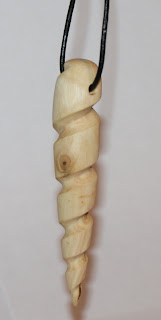As a home educating family we like to look at other cultures and their festivals, and as it happens just after Halloween we thought we'd try some Día de los Muertos (day of the dead) related crafts.
The Day of the dead is a Mexican festival, it's origins go back some 2500 - 3000 years and it's a festival celebrating those family members and loved ones who have passed on, the celebration normally takes place on November the 1st and is a national holiday, one of the major features about this festival is the decorating of skulls, normally sugar skulls, so we thought we'd have a go at decorating some skulls as well, although we didn't use sugar skulls.
We made some large ones and some small ones, the large ones have been made from some cheap plastic skulls I got for 50p each, and the small ones are made using a skeleton casting kit we got from a charity shop a while a go.
The skulls -
Both sets of skulls have been painted with white emulsion to act as a good base for drawing on, the larger skulls were painted an odd yellow colour, and because the little skulls are made of plaster they need a coat of something to act as a sealer.
To decorate the skulls we've used some permanent markers, and some fine liner type pens (the sort I use for doodling) but normal felt pens would probably do just as well.
Pens -
He's a picture of all the skulls once decorated -
The Day of the dead is a Mexican festival, it's origins go back some 2500 - 3000 years and it's a festival celebrating those family members and loved ones who have passed on, the celebration normally takes place on November the 1st and is a national holiday, one of the major features about this festival is the decorating of skulls, normally sugar skulls, so we thought we'd have a go at decorating some skulls as well, although we didn't use sugar skulls.
We made some large ones and some small ones, the large ones have been made from some cheap plastic skulls I got for 50p each, and the small ones are made using a skeleton casting kit we got from a charity shop a while a go.
The skulls -
 |
| Ready for decorating. |
To decorate the skulls we've used some permanent markers, and some fine liner type pens (the sort I use for doodling) but normal felt pens would probably do just as well.
Pens -
 |
| Very colourful. |
 |
| Very colourful. |
It has to be said that the kids did go a little crazy, but they did enjoy it a lot, and they did also take in what the festival is about, which is good.
Here's the ones I did, I didn't go quite as mad, but oddly enough I found it very pleasing to do.
Large skull -
 |
| Swirly. |
I have to be honest it seems a nice way of honouring the dead, seems to me to be more a way of celebrating the lives that people have lead, and the ones that people will lead, but the ultimate lesson is that everyone does things in a different way, and that's what makes this planet such a great place.
You can read up on the Day of the dead on Wikipedia - here (opens in new window) the kids also decided to paint some skeletons as well, although this seemed to turn into a 'what colours can you make by mixing in other colours' exercise, not that, that's a bad thing, oddly they both managed to make various shades of purple.
The skeletons -
You can read up on the Day of the dead on Wikipedia - here (opens in new window) the kids also decided to paint some skeletons as well, although this seemed to turn into a 'what colours can you make by mixing in other colours' exercise, not that, that's a bad thing, oddly they both managed to make various shades of purple.
The skeletons -
 |
| Dem bones. |
*Update*
As the kids really wanted some sugar skulls, we decided to make some, although we did cheat a little, we used icing instead of the traditional mixture, which involve (amongst other things) meringue powder, and to make the skull shape we used the plaster casting kit (after cleaning it of course) and basically pushed the icing into the mould, then the kids decorated the skulls with icing pens, then we decided to use them as cup cake decorations.
The sugar skulls -
And lastly we carved our pumpkins, which for the second year in a row are 100% home grown, and from seeds we saved from last years pumpkins.
As the kids really wanted some sugar skulls, we decided to make some, although we did cheat a little, we used icing instead of the traditional mixture, which involve (amongst other things) meringue powder, and to make the skull shape we used the plaster casting kit (after cleaning it of course) and basically pushed the icing into the mould, then the kids decorated the skulls with icing pens, then we decided to use them as cup cake decorations.
The sugar skulls -
 |
| We did make more, but they got eaten. |
And lastly we carved our pumpkins, which for the second year in a row are 100% home grown, and from seeds we saved from last years pumpkins.
A trio of terrors (or not) -
 |
| Happy Halloween. |
Thanks for reading.


















































